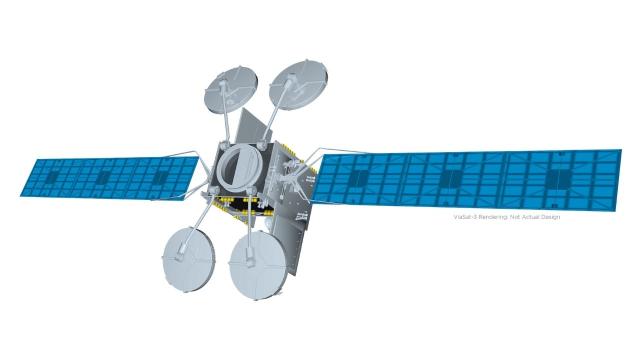Telstra is investing $1.6 billion into two major infrastructure projects including a terabit-class satellite system and fibre expansions, the Australian telco announced yesterday via the ASX.
The announcement comes as companies gear up to sell satellite internet throughout Australia this year. As for the fibre announcement, it’ll likely support existing NBN infrastructure.
Telstra’s big satellite investment
Partnering with global internet provider Viasat, which operates in the Americas, Europe and soon to be Asia, Telstra is setting up a terabit-class satellite system for use in Australia. Considering this $1.6 billion announcement from Telstra, it looks like Viasat wants to expand to the Australian market too, by offering support for its new ViaSat-3 global satellite system under a 16.5 year contract.
That satellite is a direct competitor to Elon Musk’s Starlink and currently offers speeds similar to the NBN in other regions. ViaSat-3 satellites are designed to offer more than 1Tbps of network capacity, offering speeds of more than 150Mbps under ideal circumstances. If you’re interested in satellite internet, you might be able to expect fast download speeds, but expect some not-so-great latency.
Telstra will manage Viasat’s satellite access node (SAN) equipment across Australia, managing and building links to each site.
Supposedly, it’d be the largest-scale satellite solution deployment in Australia’s history. Sorry, Sky Muster.
“It’s a clear demonstration of the potential opportunities we have when we combine Telstra Enterprise’s customer management and service capabilities with Telstra InfraCo’s industry-leading existing infrastructure assets and new build capabilities,” says Andrew Penn, Telstra’s CEO.
“By leveraging their existing infrastructure for our ground network, we can cost-effectively optimise our satellite assets and significantly lower our risk of deployment and operations for the ViaSat-3 terabit-class satellite system. We remain focussed on delivering advanced connectivity – from mobility and government services to connecting hard-to-reach communities – across the region,” added Dave Ryan, the president of Viasat’s space and commercial networks.
Telstra’s national fibre network
Handled by Telstra’s infrastructure arm InfraCo, the second big infrastructure investment is the upgrading of fibre paths throughout Australia, with a focus on inter-city fibre. This project will add 20,000 new kilometres of fibre to increase the capability of Telstra’s optical fibre network.
The project focuses on inter-city connectivity with ultrafast speeds, along with improved regional connectivity and the opportunity for higher capacity mobile backhaul.
“This will support remote working and education needs, health services, high-definition entertainment consumption and online gaming, and IoT use cases such as mining and agriculture,” Penn added.
This fibre expansion will allow for transmission rates of up to 650Gbps, more than six times the common rate of today, which is about 100Gbps. It’s set to commence construction in late 2022, with testing already underway.
With a focus on inter-city communications, it looks like a major part of Telstra’s fibre network upgrade is business customers. Supposedly, communications between capital cities will be as data-intensive as 55Tbps per fibre pair capacity on routes connecting Australia’s big cities.
What’s Telstra up to?
While the logical move of the fibre upgrade announcement from Telstra is to enhance the already-existing infrastructure used by their NBN service, it looks like the Viasat satellite service will be operating independently from Australia’s fibre network. It makes sense for Telstra to get involved, considering the growing arms race in the satellite internet space (via Starlink and Optus 11).
“Investing in these two truly significant nation-building projects will see us continue to have the largest inter-city fibre network in the country, helping to future proof Australia’s digital economy and further improving connectivity in regional Australia,” added Penn.
These projects will begin to be funded and rolled out between 2022 and 2025.
